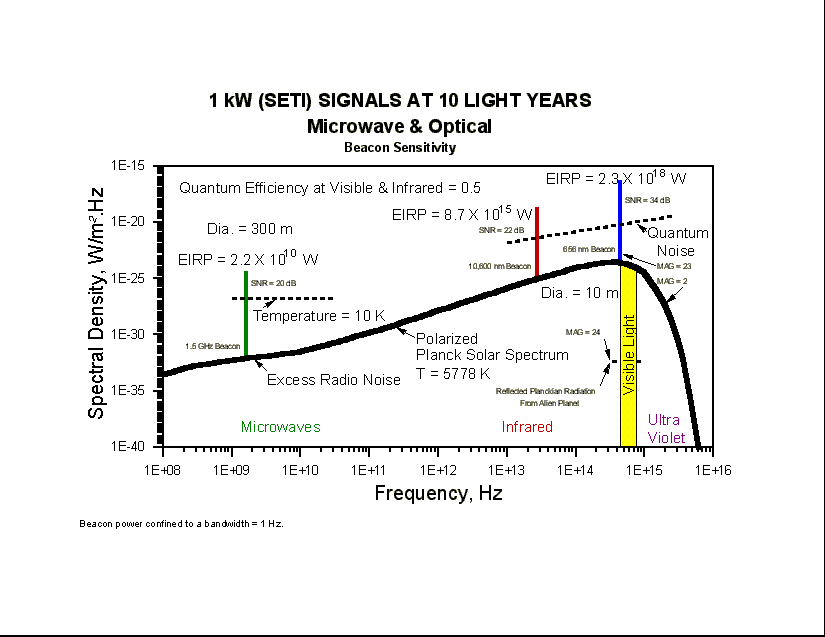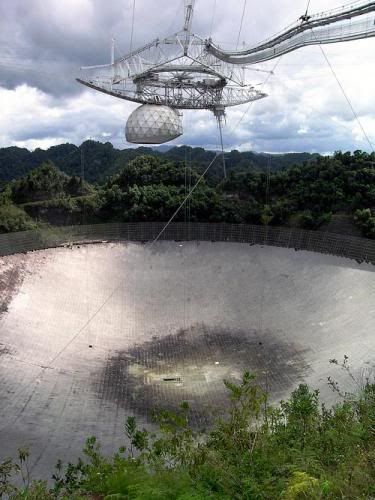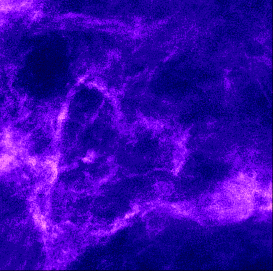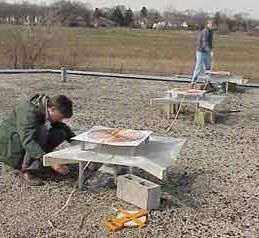Cafe SETI: Trade stories with other SETI@home users II . . .
Message boards :
Cafe SETI :
Cafe SETI: Trade stories with other SETI@home users II . . .
Message board moderation
Previous · 1 · 2
| Author | Message |
|---|---|
 Dr. C.E.T.I. Dr. C.E.T.I. Send message Joined: 29 Feb 00 Posts: 16019 Credit: 794,685 RAC: 0 
|
. . . Researchers unveil Mozart piano pieces in Austria  A sheet of music from the Dies Irae movement of the Requiem Mass in D Minor (K. 626) in Mozart's own handwriting . . . [It is located at Mozarthaus in Vienna, Austria] By VERONIKA OLEKSYN, Associated Press Writer Veronika Oleksyn, Associated Press Writer – 1 hr 42 mins ago SALZBURG, Austria – Technically demanding and at times furiously paced, two newly identified Mozart works unveiled Sunday are helping scholars complete their assessment of the maestro's very early achievements. The childhood creations — an extensive concerto movement and a fragmentary prelude — provide yet more proof the Salzburg native was a true prodigy. And maybe a bit of a showoff. "We have here the first orchestral movement by the young Mozart — even though the orchestral parts are missing — and therefore it's an extremely important missing link in our understanding of Mozart's development as a young composer," said Ulrich Leisinger, head of research at the International Mozarteum Foundation after a presentation of the pieces in Mozart's native Salzburg. Mozart, who was born in 1756, began playing the keyboard at age 3 and composing at 5. By the time he died of rheumatic fever on Dec. 5, 1791, he had written more than 600 pieces. Leisinger said Mozart likely wrote the two newly attributed pieces when he was 7 or 8 years old, with his father, Leopold, transcribing the notes as his son played them at the keyboard. A series of analyses confirmed the writing as Leopold's; at the time Mozart was not yet versed in musical notation. But Leopold was ruled out as the composer of the pieces based on stylistic scrutiny, the Mozarteum said in a statement. "There are obvious discrepancies between the technical virtuosity and a certain lack of compositional experience," it said. At Sunday's presentation at the Mozart residence, Austrian musician Florian Birsak, an expert on early keyboard music, played the two pieces on the maestro's own fortepiano for a throng of reporters, photographers and camera crews. Later, Birsak explained how learning to play the concerto movement was a bit of a challenge because of complex aspects such as "large jumps." To Robert D. Levin, who provided an orchestral accompaniment to the concerto, the young Mozart wanted to show "everything he could do" in the piece. "What the composer expects of the player in racing passagework, crossed hands and wild leaps is more than a bit crazy," said Levin, a pianist and Harvard University professor internationally recognized for his completion of Mozart fragments. Both works were identified as part of a larger investigation of the foundation's Mozart-related materials, including letters, documents and more than 100 music manuscripts — some in the hand of the composer, others transcribed by contemporaries. While "Nannerl's Music Book" has been in the foundation's hands for more than a century, the pieces were considered anonymous creations until Leisinger and his team took a closer look. "These two pieces struck us because they were so extravagant," Leisinger said, adding that the two works share a number of similarities but that the prelude — believed to have been written after the concerto movement — was "much more refined." "One could almost get the impression that Leopold said to his son, 'Look, you've written this crazy concerto movement, try to do it better, a little bit more concise,' and as a result we ended up with this prelude-like movement," he said. Posthumous discoveries of Mozart pieces are rare but not unheard of. In September, Leisinger announced that a French library had found a previously unknown piece handwritten by Mozart. That work, described as the preliminary draft of a musical composition, was found in Nantes, in western France, as staff members went through the library's archives. Leisinger said the library contacted his foundation for help authenticating the work. The latest finds add "important details" to what we know about the young Mozart's work, said Christoph Wolff, professor of music history at Harvard University, who is also director of the Bach Archive in Leipzig, Germany. "The Salzburg discovery offers significant insight into the earliest accomplishments of Mozart," Wolff said in an e-mail to The Associated Press. The Salzburg-based foundation, established in 1880 and a prime source for Mozart-related matters, seeks to preserve the composer's heritage and find new approaches for analyzing him. ___ On the Net: . . . International Mozarteum Foundation  BOINC Wiki . . . BOINC Wiki . . .Science Status Page . . . |
 Dr. C.E.T.I. Dr. C.E.T.I. Send message Joined: 29 Feb 00 Posts: 16019 Credit: 794,685 RAC: 0 
|
Intel News Release  Courtesy of benchside . . . Facebook Application for BOINC from Intel and GridRepublic Intel has teamed up with GridRepublic to bring the Progress Thru Processors application to Facebook. Display your stats on your profile, encourage others to join in volunteer computing, change preferences, add computers, and more from the application . . . Intel Helps Convert Unused PC Processor Power into an Instrument to Fight Disease and Study Climate Change New Application Combines Social Networking Power of Facebook with the Life-Changing Promise of Volunteer Computing
Article Courtesy of Intel Corporation - All rights reserved  BOINC Wiki . . . BOINC Wiki . . .Science Status Page . . . |
 Dr. C.E.T.I. Dr. C.E.T.I. Send message Joined: 29 Feb 00 Posts: 16019 Credit: 794,685 RAC: 0 
|
 . .. 12 Worthy Causes Seek Your Spare PC Cycles
 BOINC Wiki . . . BOINC Wiki . . .Science Status Page . . . |
 Dr. C.E.T.I. Dr. C.E.T.I. Send message Joined: 29 Feb 00 Posts: 16019 Credit: 794,685 RAC: 0 
|
. . .here's something that may bE rElEvant  Graph showing the normalized signal-to-noise ratio (SNR) for 1 kW beacon signals over a distance of ten light years. It assumes symmetrical telescopes at both ends of the link, and that the transmitter is not resolved from the image of the star.
. . . interested? sEE The Search For Extraterrestrial Intelligence (SETI) In The Optical Spectrum: A Review 1990-2006 Stuart A. Kingsley / The Columbus Optical SETI Observatory  BOINC Wiki . . . BOINC Wiki . . .Science Status Page . . . |
 Dr. C.E.T.I. Dr. C.E.T.I. Send message Joined: 29 Feb 00 Posts: 16019 Credit: 794,685 RAC: 0 
|
UC BERKELEY NEWS - 11.19.2009 . . . UC BERKELEY RESEARCH GARNERS NEARLY $65 MILLION IN FEDERAL STIMULUS MONEY By Robert Sanders, Media Relations
 BOINC Wiki . . . BOINC Wiki . . .Science Status Page . . . |
 Dr. C.E.T.I. Dr. C.E.T.I. Send message Joined: 29 Feb 00 Posts: 16019 Credit: 794,685 RAC: 0 
|
‘Chess set for Tesla’ 
 BOINC Wiki . . . BOINC Wiki . . .Science Status Page . . . |
kittyman  Send message Joined: 9 Jul 00 Posts: 51468 Credit: 1,018,363,574 RAC: 1,004 
|
"Freedom is just Chaos, with better lighting." Alan Dean Foster 
|
|
Anthony Send message Joined: 9 Dec 09 Posts: 1 Credit: 7,360 RAC: 0 
|
Hola from houston well my theory is that a not a meteroited hit half the siberain i do believe it was a ufo that somehow exploded ther was radaiton that was still detecated and things still havent grown and some of the people that outthere did pass away from unknow reason from illiness which i do believe was casuse by this but yet nothing was found of eveinece of either the meterioed or ufo untill more proof is obtian but there migh be near the swamp of that area rather either or the meterioed might be or the ufo might have crashed but alwasy ask yourself all the question if ther is going to be any scientiiect team gatheing evedience rember the swamp near that area thank y pple and becarefu;l of the quicksand[/list] |
 Dr. C.E.T.I. Dr. C.E.T.I. Send message Joined: 29 Feb 00 Posts: 16019 Credit: 794,685 RAC: 0 
|
. . . Thank you Bruno - May your Holidays & the New Year see you well . . . Gianni Urso IZ8ELM of national radio program RapportoRadio in RapportoRadio - n°43 - (122) radio interview on radio astronomy, SETI@home and distributed computing with Bruno Moretti Turri IK2WQA (in italian language)  BOINC Wiki . . . BOINC Wiki . . .Science Status Page . . . |
 Dr. C.E.T.I. Dr. C.E.T.I. Send message Joined: 29 Feb 00 Posts: 16019 Credit: 794,685 RAC: 0 
|
. . . Jill Tarter's call to join the SETI search [TED Prize winner!]
 BOINC Wiki . . . BOINC Wiki . . .Science Status Page . . . |
 Dr. C.E.T.I. Dr. C.E.T.I. Send message Joined: 29 Feb 00 Posts: 16019 Credit: 794,685 RAC: 0 
|
|
 Dr. C.E.T.I. Dr. C.E.T.I. Send message Joined: 29 Feb 00 Posts: 16019 Credit: 794,685 RAC: 0 
|
|
 Dr. C.E.T.I. Dr. C.E.T.I. Send message Joined: 29 Feb 00 Posts: 16019 Credit: 794,685 RAC: 0 
|
 Berkeley News - 22 Feb 2010 Designer of the Arecibo telescope has passed away. William E. Gordon, the designer of the Arecibo radio telescope, has passed away at the age of 92.  BOINC Wiki . . . BOINC Wiki . . .Science Status Page . . . |
 Dr. C.E.T.I. Dr. C.E.T.I. Send message Joined: 29 Feb 00 Posts: 16019 Credit: 794,685 RAC: 0 
|
Berkeley News: Video on making a desktop supercomputer Check out a Youtube video about making a multi-GPU desktop supercomputer.  BOINC Wiki . . . BOINC Wiki . . .Science Status Page . . . |
 Dr. C.E.T.I. Dr. C.E.T.I. Send message Joined: 29 Feb 00 Posts: 16019 Credit: 794,685 RAC: 0 
|
 ~ a large 'sculptured' nail was pinning the plane on the Wall ~ ~ a large 'sculptured' nail was pinning the plane on the Wall ~. . . Dustin Schuler - an artist friend in Los Angeles, California placed a piper on the wall of The American Gallery & Studios a number of years ago - the plane & a collection of smaller model planes were in The American Gallery - 2nd floor representing a Butterfly collection . . .  BOINC Wiki . . . BOINC Wiki . . .Science Status Page . . . |
 Dr. C.E.T.I. Dr. C.E.T.I. Send message Joined: 29 Feb 00 Posts: 16019 Credit: 794,685 RAC: 0 
|
|
 Daniel Michel Daniel Michel Send message Joined: 2 Feb 04 Posts: 14925 Credit: 1,378,607 RAC: 6 
|
I wish i could recall those days...I just got in for a bit of what is now called SETI Classic...I went over to SETI BOINC that summer... Believe it or not...For quite awhile i was unaware of the message boards!...I was just a lonely cruncher...out on my own...Not knowing anything of the worldwide community that has grown up around SETI@home.  PROUD TO BE TFFE! |
 Dr. C.E.T.I. Dr. C.E.T.I. Send message Joined: 29 Feb 00 Posts: 16019 Credit: 794,685 RAC: 0 
|
. . . finally after almost ONE YEAR i have fixed my 1714 ERROR - baCk to crunChin' i go . . .  < on-&-off > coffee 4 y'all . . . note: i shall be writing a paper regarding this particular ERROR @ soME other tiME  BOINC Wiki . . . BOINC Wiki . . .Science Status Page . . . |
 Dr. C.E.T.I. Dr. C.E.T.I. Send message Joined: 29 Feb 00 Posts: 16019 Credit: 794,685 RAC: 0 
|
|

©2024 University of California
SETI@home and Astropulse are funded by grants from the National Science Foundation, NASA, and donations from SETI@home volunteers. AstroPulse is funded in part by the NSF through grant AST-0307956.




